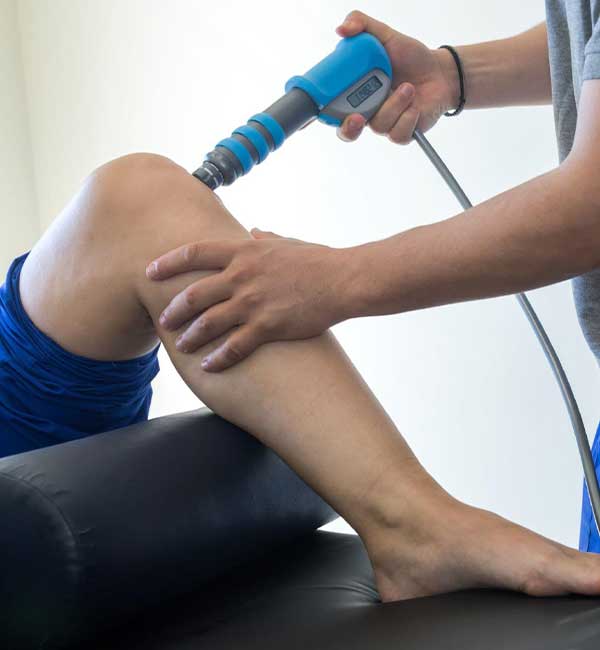Shockwave Therapy
Shockwave therapy is a non-invasive medical treatment that uses high-energy shockwaves to stimulate the body’s natural healing process. This therapy is also known as Extracorporeal Shockwave Therapy (ESWT). It has been used for over two decades to treat various musculoskeletal conditions, including plantar fasciitis, Achilles tendonitis, tennis elbow, and more.
During shockwave therapy, a device is used to direct high-energy shockwaves at the affected area. These shockwaves are generated by a machine that is placed on the skin and apply pressure pulses to the underlying tissue. The pressure waves stimulate the body’s natural healing process by increasing blood flow to the area, promoting the growth of new blood vessels, and stimulating the production of collagen.
The increased blood flow and collagen production help to reduce inflammation, relieve pain, and promote tissue healing. The shockwaves also help to break down scar tissue and calcifications that can develop in the affected area, which can improve mobility and range of motion.

Shockwave therapy is generally considered safe and well-tolerated, with few side effects. It is typically recommended for patients who have not responded to other forms of treatment for their musculoskeletal condition or who are not candidates for surgery. However, patients with certain medical conditions may not be candidates for this type of therapy, so it is important to discuss your medical history with your healthcare provider before undergoing shockwave therapy.
Shockwave therapy may be recommended for individuals who have chronic pain or musculoskeletal conditions that have not responded to other forms of treatment. It can be used to treat a variety of conditions, including:
- Plantar fasciitis – A common condition causing heel pain and inflammation in the plantar fascia, a band of tissue that runs along the bottom of the foot.
- Achilles tendonitis – A condition that causes pain, swelling, and inflammation in the Achilles tendon, which connects the calf muscles to the heel bone.
- Tennis elbow – A condition causing pain and inflammation in the elbow, typically due to overuse of the forearm muscles and tendons.
- Shoulder pain – Pain and inflammation in the shoulder joint, often caused by conditions such as rotator cuff injuries or frozen shoulder.
- Hip pain – Pain and inflammation in the hip joint, often caused by conditions such as bursitis or osteoarthritis.
- Knee pain – Pain and inflammation in the knee joint, often caused by conditions such as patellar tendinitis or osteoarthritis.
- Back pain – Pain and discomfort in the back, often caused by conditions such as herniated discs or spinal stenosis.
It is important to note that not everyone is a good candidate for shockwave therapy. Patients with certain medical conditions, such as pregnancy, pacemaker use, or blood clotting disorders, may not be candidates for this type of therapy. Additionally, shockwave therapy maynot be appropriate for individuals with certain types of fractures, infections, or tumors in the treatment area. It is important to discuss your medical history with your healthcare provider before considering shockwave therapy.
In general, shockwave therapy is recommended for individuals who have not responded to other forms of treatment, such as physical therapy, medication, or rest. It is also often used as an alternative to surgery for certain conditions. Your healthcare provider can help determine if you are a good candidate for shockwave therapy and what you can expect during the treatment process.
